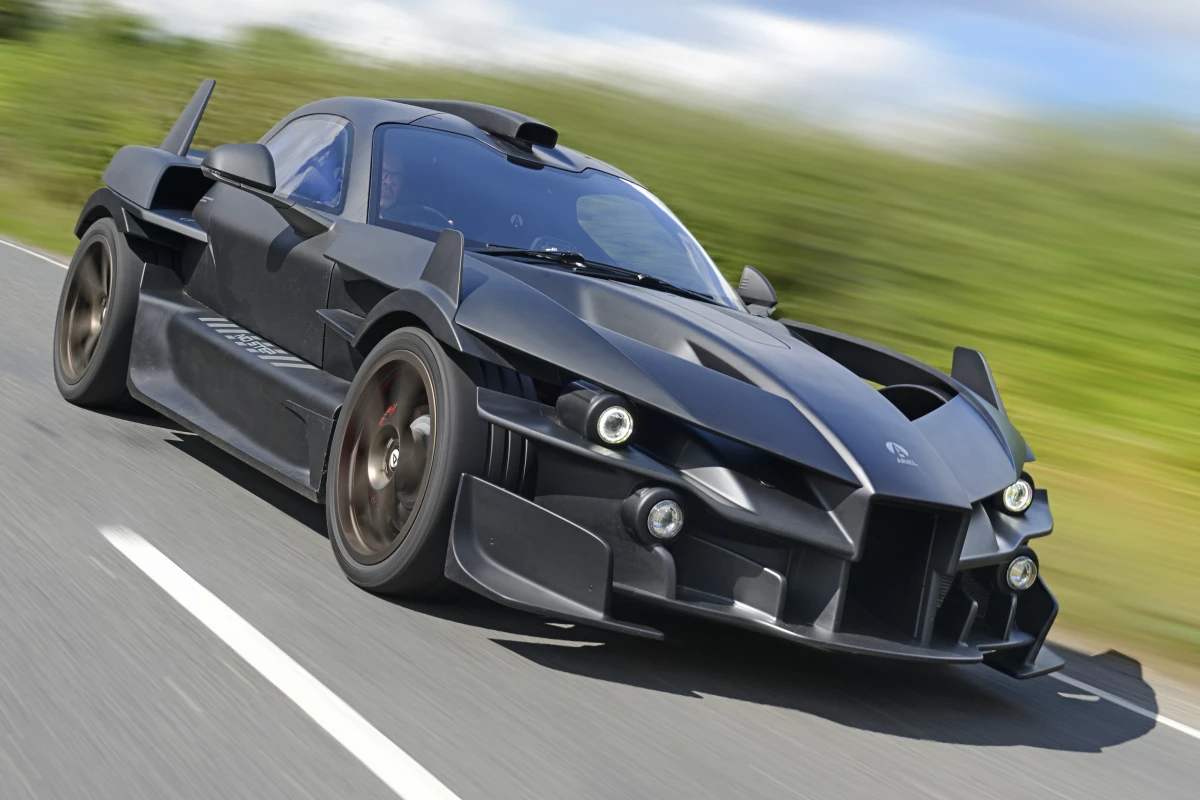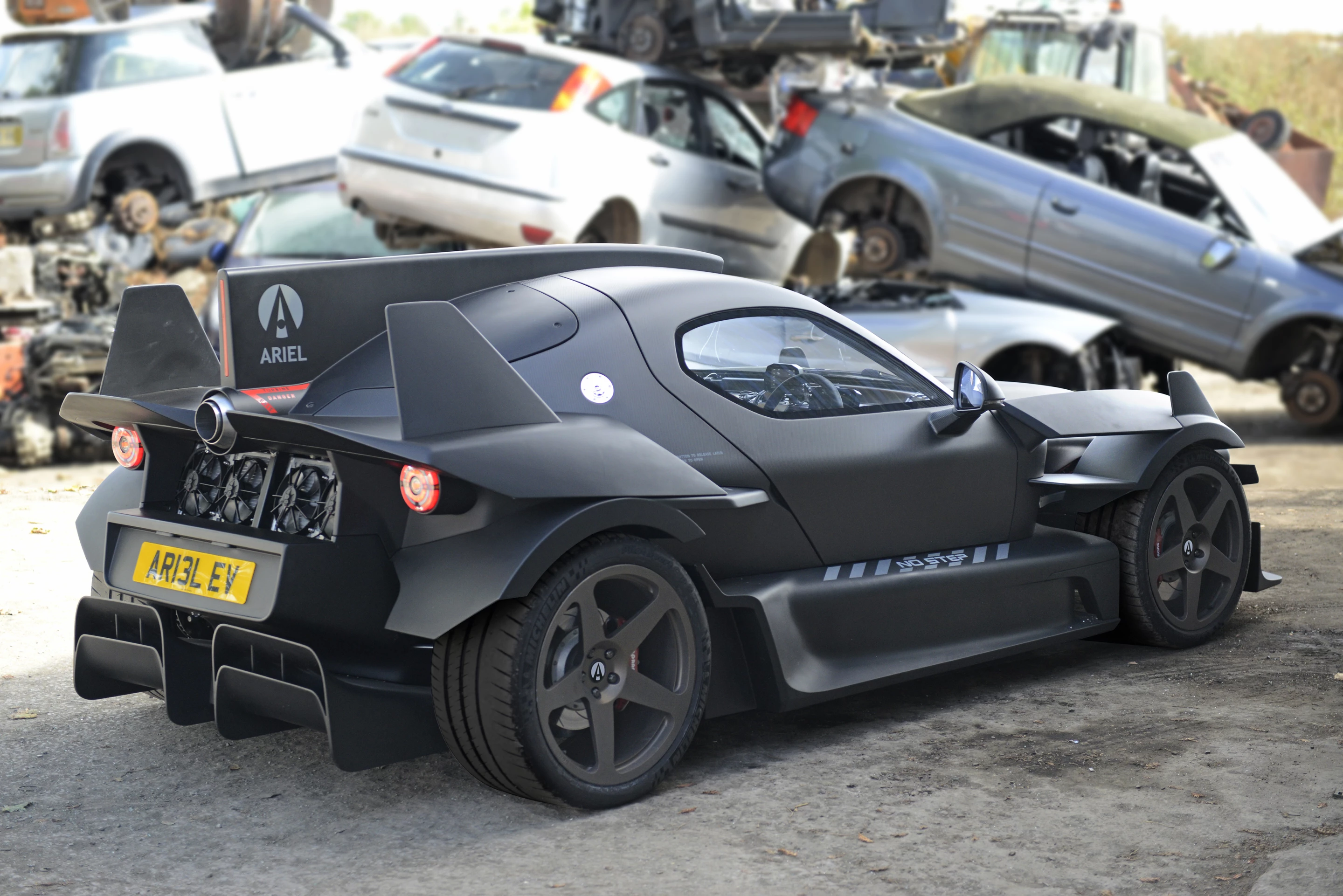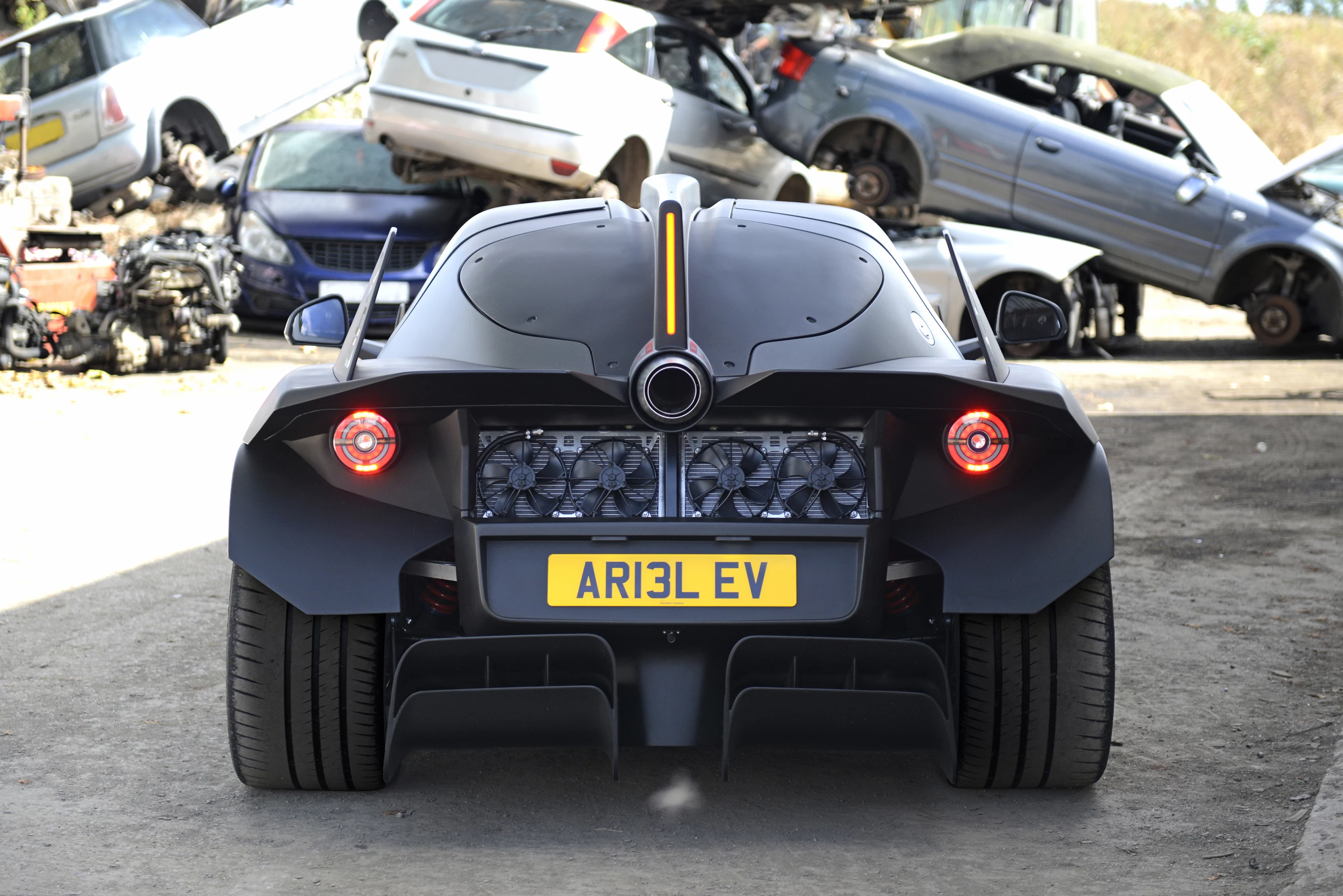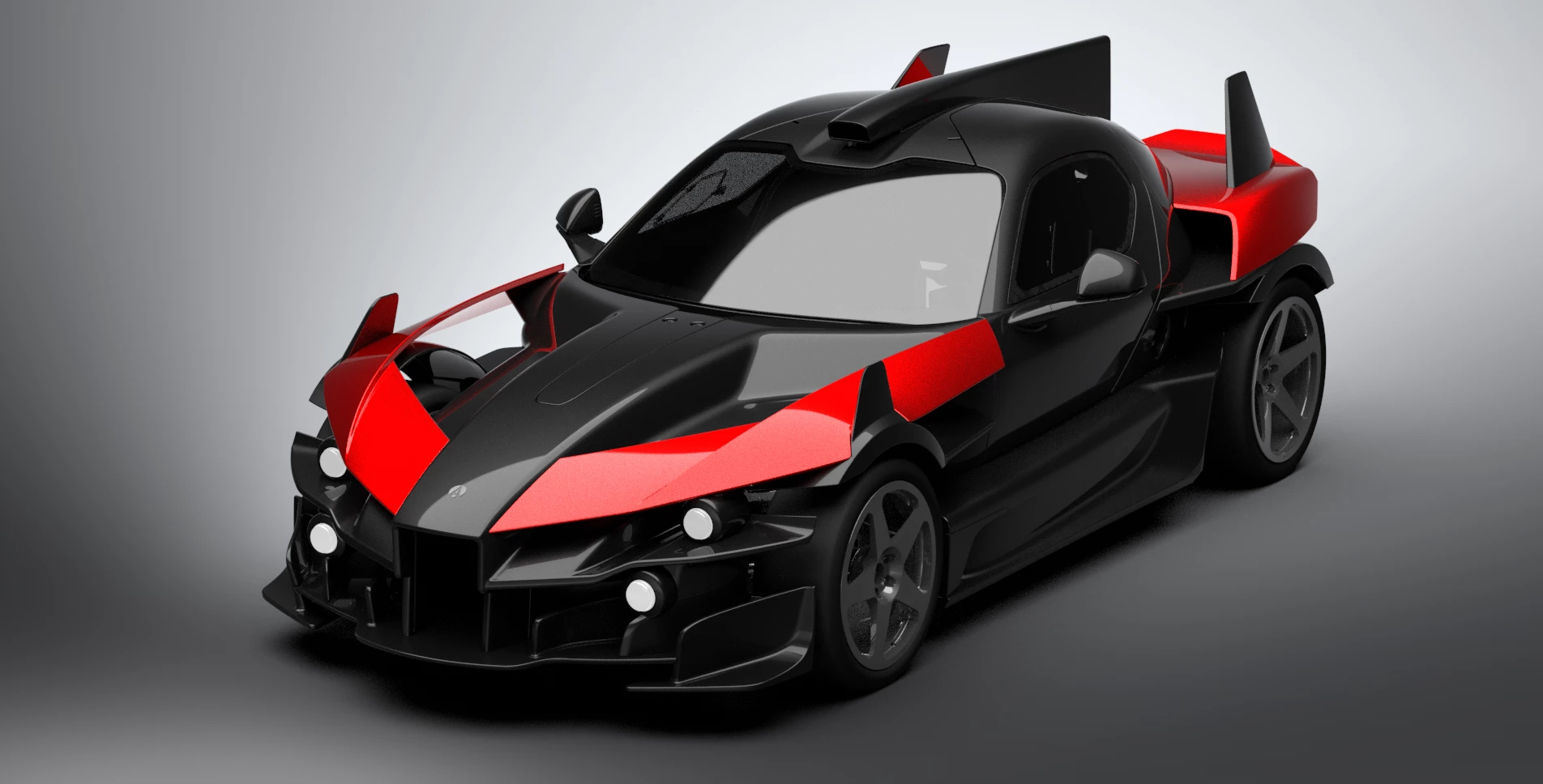More than just another electric hypercar, the "Hipercar" from Ariel breaks from the pack with a little performance-rounding innovation. The car is still a prototype with a ways left before production, but Ariel popped up recently to deliver a rather in-depth update, perhaps realizing that five years is a literal lifetime in the fast-evolving hypercar market. Not only does the creative hyper-hybrid leverage the instant torque of its quad-motor drive for eyebrow-shearing performance, it packs an optional range-extending micro-turbine to give it the autonomy and flexibility of a gas hypercar.
Yes, the "Hipercar" name is among the most awful we've ever seen, but it's also tempered by reasoning and a limited lifespan. It stands for "High-performance carbon reduction" and is merely a development fill-in. Ariel says that the official model name has yet to be finalized.
A name that weak would definitely be a drag on a car that looks so angry and menacing it could be a movie supervillain's getaway ... or weapon. Ariel is known entirely for open, unclad super vehicles, so a fully enclosed body represents previously unexplored territory. It has clearly thrown itself all in on the unfamiliar task, creating an unmistakably skeletal design that ties back into its grown-go-cart DNA. The Hipercar hood looks much like the motorsport-style nose of the Atom, albeit with the addition of wing-like fairings that sweep around to the sides and backward to create a perimeter. These pair with a lower set of wings to sandwich the beady headlights.
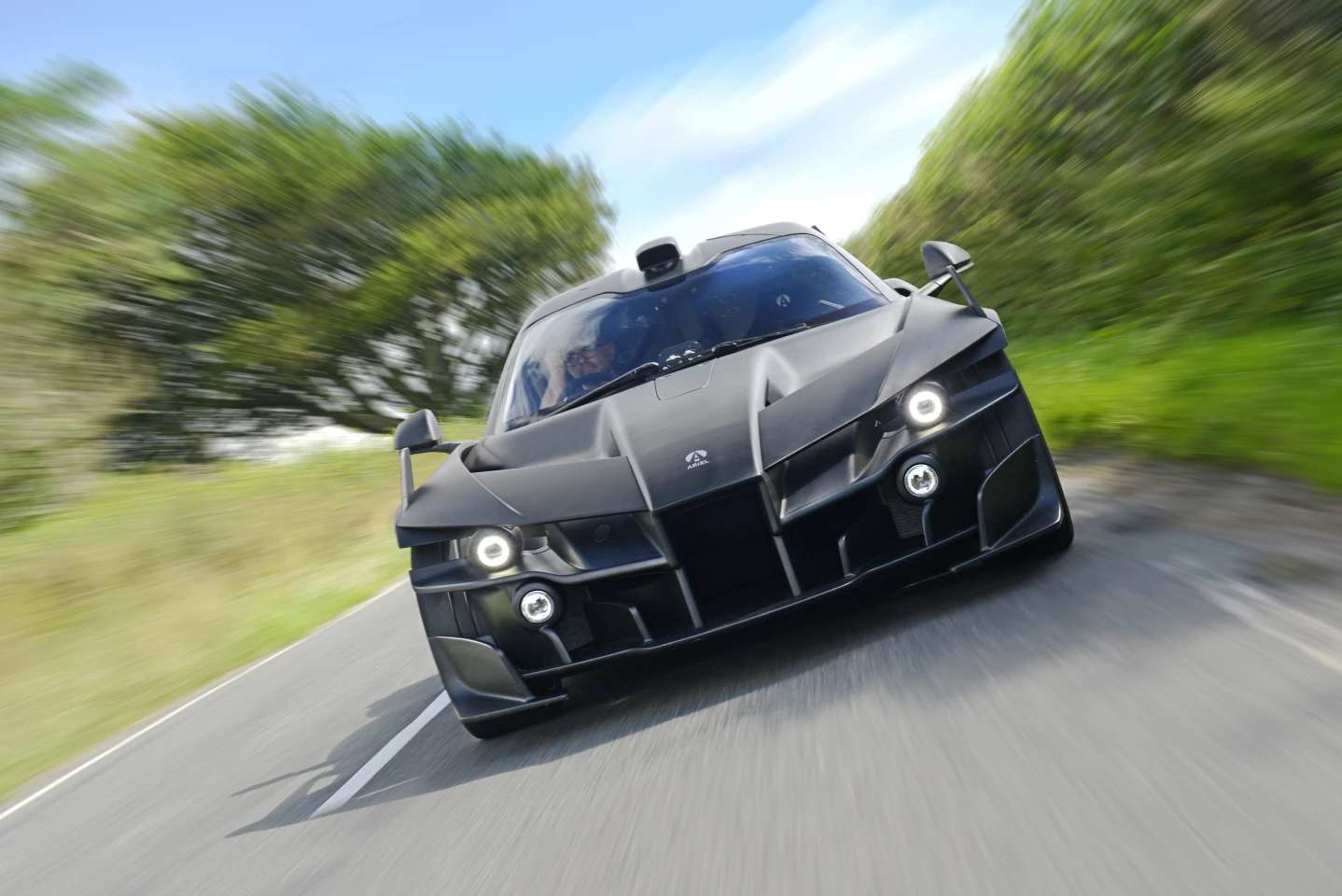
It's not a pretty car by any stretch of the imagination, but Ariel leans on aerodynamics, not sensual beauty, to guide its carbon fiber shaping. For example, the prominent fins sticking up off the front fenders are designed to cut drag on the side mirrors, while the rear fins help to stabilize the haunches and improve cornering. The myriad cuts and planes up front suck air in and guide it through to a more optimal route.
Ariel plans to offer two- and four-wheel drive options, both carrying a 295-hp Equipmake electric motor for each of their respective drive wheels. So the 2WD version will have 590 hp (440 kW), along with 664 lb-ft (900 Nm) of torque, while the 4WD variant will lunge past the 1,000-hp hypercar threshold for a total of 1,180 hp (880 kW) and 1,327 lb-ft (1,800 Nm).
The Hipercar weighs in at an estimated 3,307 lb (1,500 kg). Top speed is intentionally limited to 155 mph (249 km/h), but the car delivers top-tier performance at the lower end of the speed spectrum. Estimated sprint times check in at 2.09 seconds (0-60 mph/96.5 km/h) and 4.4 seconds (0-100 mph/161 km/h), with mid-tier acceleration from 60 to 120 mph (96.5 to 193 km/h) rolling in at 3.5 seconds.
But that's for the prototype, and Ariel expects even better numbers once it's completed the adjustable torque-vectoring system that will go into the production car. It estimates those at below 2 seconds for the 0-60 and below 4 for the 0 to 100.
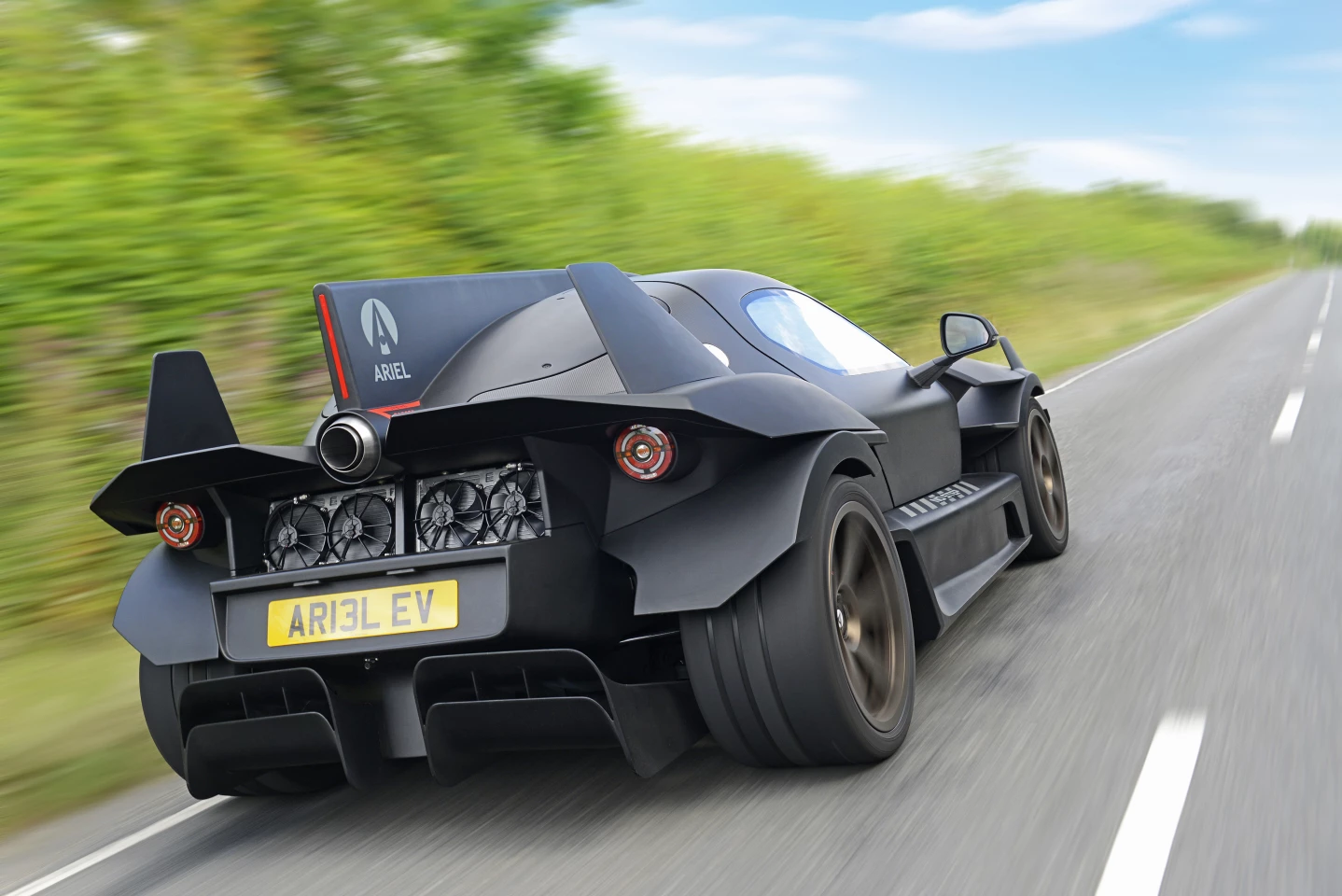
When the driver isn't pushing the car to its absolute limits, the 62-kWh battery pack will deliver roughly 150 miles (241 km, WLTP) of range. Those who prefer to drive their Hipercar farther distances without the hassle of stopping to charge can add the optional Cosworth turbine range-extender. The 110-lb (50-kg) micro-turbine kicks in when activated by the battery management system, and runs at a fixed 110,000 rpm to develop a continuous 35 kW output to maintain battery charge level. There's also an on/off manual override.
Ariel hasn't put forth a finalized battery + turbine range estimate yet, but perhaps the even bigger advantage is that drivers can simply refuel at a gas station. The turbine can also run on a variety of other fuels, and Ariel hopes to add a hydrogen option in the future to cut harmful emissions entirely.
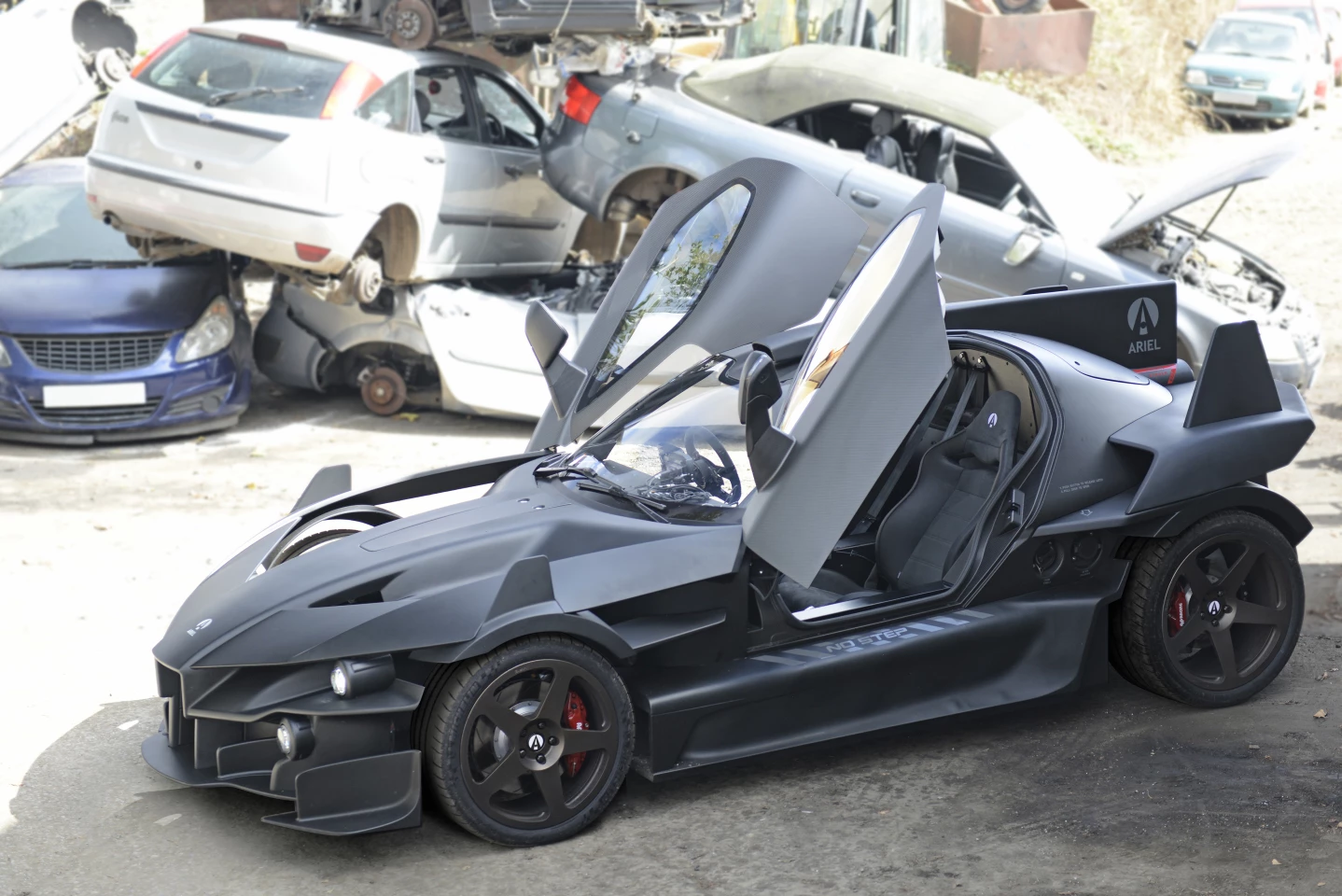
As far as charging goes, Ariel plans to go the Hyundai route of equipping the 800-V Hipercar with a split-charging system that can also operate at voltages below 500 V. This way it's ready for the present and future.
Ariel admits it has another year or two of development ahead before production. As of now, it plans to build a limited number of Hipercar models, each priced below £1 million (approx. US$1.13 million), including all taxes.
Source: Ariel
